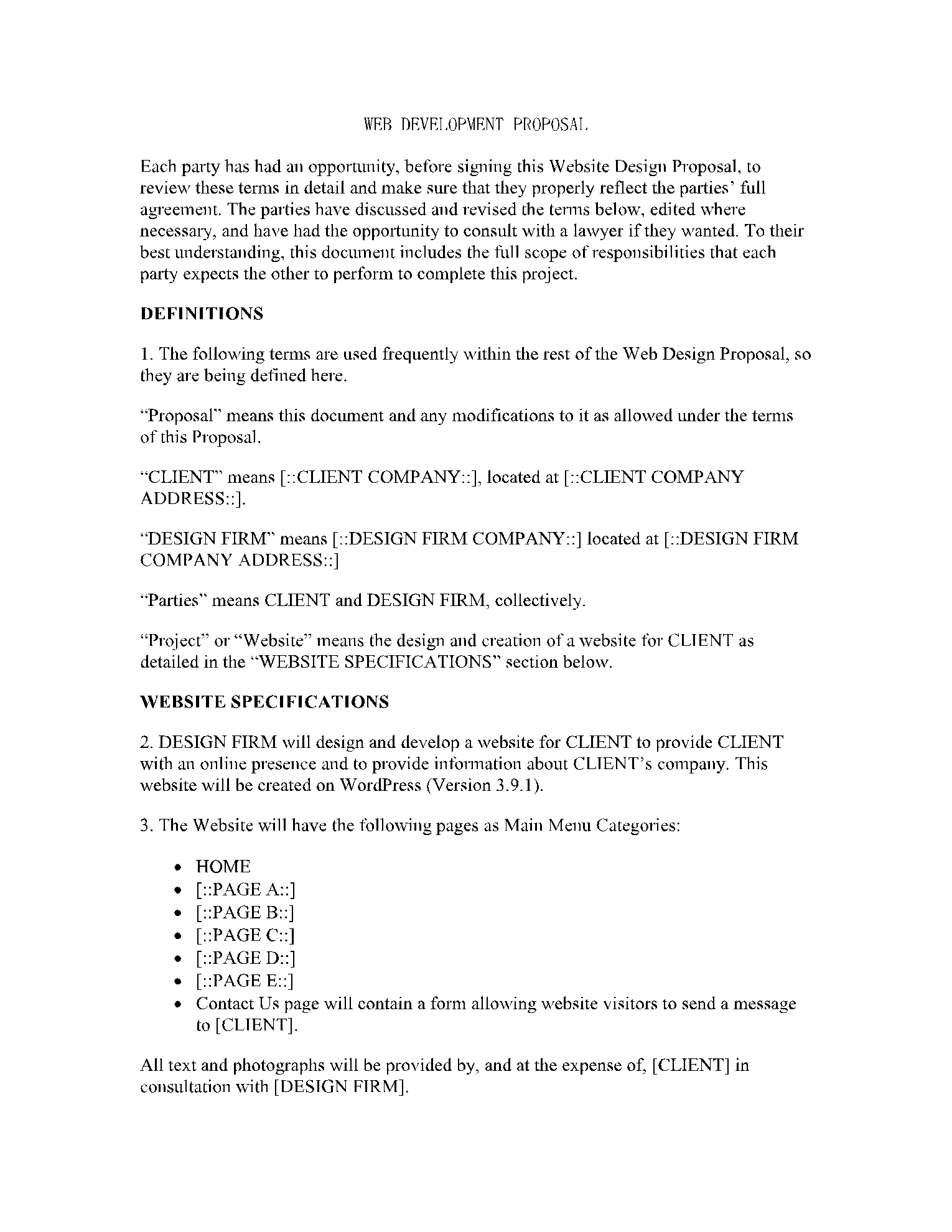Introduction
The website development proposal that you present to your clients will either make or break your possibilities of being hired for your possible client's project. It needs to be presented properly and professionally. You want to put your business's best foot forward through the usage of website development templates.
What is a Website Development Proposal?
A website proposal is a document that describes everything the brand owners need to know to begin a project. It’s a vital first step towards getting a project to take off from the ground. A web development proposal is normally chosen during the project input process. The website proposal should include all the data your clients need to make a well-informed choice.
A well-written website proposal informs and persuades, and connects project management skills with a few other basic skills: research, data analysis, and some content writing.
What do You Need From the Client Before Writing a Website Development Proposal?
To write a solid website development proposal, or if you want your proposal to stand out, you’ll need to ask a lot of questions. Getting targeted details from the client allows you to tailor your proposal and your plan to their specific requirements. Without a deep understanding of the client’s position, your proposal will be flat and forgettable.
Here are some of the questions you should ask the client:
- What is the ultimate purpose of your website development project?
- What is the target audience for the brand?
- What integrations (with social media, apps, or client-side systems) will be needed?
- What factors might affect this deadline?
How to Write a Website Development Proposal?
Remember that the reason you’re writing a website proposal is to get administrative buy-in. You need decision-makers on your team to turn a concept into reality.
Step 1: Define the problem
What’s the problem your project is trying to solve? Why is it a problem? Why is it worth answering? Make your viewers see the problem the way you see it.
Tips for defining the problem:
Start strong - Decision-makers normally don’t allow much time to look over a website proposal, so make sure that the pain point is described and in a way that resonates with them.
Use facts, not opinion - Although you need your audience to understand the hardness of a problem, you don’t want to stretch. Instead, use data from your research to back up your statements.
Step 2: Present your solution
How will your plan solve the problem? Why is your solution the better choice over other similar ones? Explain why other solutions won’t work for the position.
Tips for presenting your solution:
Anticipate questions and problems -Be ready to protect your answer from all angles. Be ready to explain why your more expensive solution is much than a less expensive one.
Present the solution’s larger impact -Business owners usually get more passionate about projects with wide-ranging impacts than those with short impacts.
Step 3: Define your deliverables and progress criteria
This part provides a picture of the roles and attributes of the deliverable, plus how to know if the project is strong.
Tips for defining deliverables:
Include a delivery date -Explain what your plan will deliver and what users can assume from it.
Your solution must be SMART - Your success criteria will signal whether the plan has been strong.
Step 4: State your plan or approach
This is the most important section of the proposal and explains how to reach the project’s goals. It starts with an explanation of the program and why it’s relevant and powerful. It also describes how problems will be handled.
Planning tips:
Introduce project strategies - Will you be doing it the traditional way? Do you use third-party contractors, in-house staff, or consultants? What will their purposes and duties be? This is your chance to explain the "why" behind the choices you're making to get the project ended.
Explain how problems will be addressed - This shows your project management plan's risk mitigation plans.
Step 6: Tie it all together
Finish your proposal with a result that briefly reviews the problem, solution, and benefits. Highlight the significant parts, and make your project stand out by restating opinions or facts you want your audience to remember.
Check your proposal for flexibility of ideas and whether the factors support each other.
Tips for tying everything together:
- Your proposal should read like a book
- Refrain from introducing anything that doesn’t fit
- Make sure all project proposal elements are present
Conclusion
The whole content of the proposal, from scope to timeline to requirements, is made around the Why. When you get the Why, it’s much easier to start writing website proposals with a downloaded Website Development Proposal Template that is optimized for the best client impact and customizable to your particular requirements.
